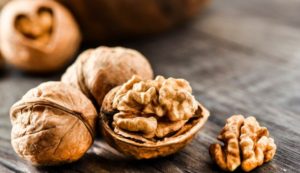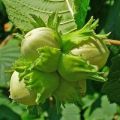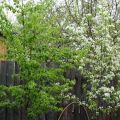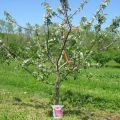Why hazelnuts may not bear fruit, causes and diseases, ways to solve the problem
Hazelnuts are a decoration of a personal plot. Hazelnut gardeners are in awe of the beautiful tree and look forward to the first fruits. But fruiting does not come. Why healthy hazelnuts don't bear fruit? What factors can lead to the infertility of a plant and how to get the first harvest quickly are the main questions that gardeners face.
How many years does hazelnuts begin to bear fruit?
Hazelnuts are able to grow in gardens and produce crops for over 20 years. The fruiting time is extended by the efforts of gardeners. After 7 years, the first fruits appear on trees grown from seeds. After 4 years, nuts can be harvested from seedlings obtained by vegetative propagation.
Note: The most productive years of the plant are from 7 to 20 years. During this time, the bush goes through a cycle of complete rejuvenation, trees need to be pruned to stimulate the formation of fruits.
Reasons why hazelnuts may not bloom
Growing hazelnuts is not difficult, but it requires knowledge of tree planting technology. Improper maintenance, poorly chosen planting site, poor planting material, tree diseases or bad weather conditions are factors that can interrupt the flowering process and contribute to a poor harvest. How to make cultivated hazelnuts bloom and bear fruit, what could be the reasons for the lack of fruit?

Bad seedling
Correctly grown or selected planting material is the basis for future trees, which the gardener lays for many years. Bad seedlings are more susceptible to disease, take a long time to take root and delay the time of harvesting the first harvest.
When choosing seedlings, you must comply with the conditions:
- Correspondence of the hazelnut variety to the region where it is supposed to grow, the species must be zoned.
- The flowering period of the selected hazelnut variety should fall on the warm season of the region in which the hazelnuts will grow, the risk of frost during this period should be minimal.
- A seedling brought from the forest will not give a good harvest under conditions of cultivation in a personal plot. Choose "domesticated" hazelnut varieties.
- In order not to be mistaken with the choice of the variety, it is better to purchase seedlings in specialized nurseries and professional agricultural stores.
Selected seedlings must be examined: the foliage must be healthy, without signs of fungal diseases, the root system is lush, without the presence of damaged and dried roots.
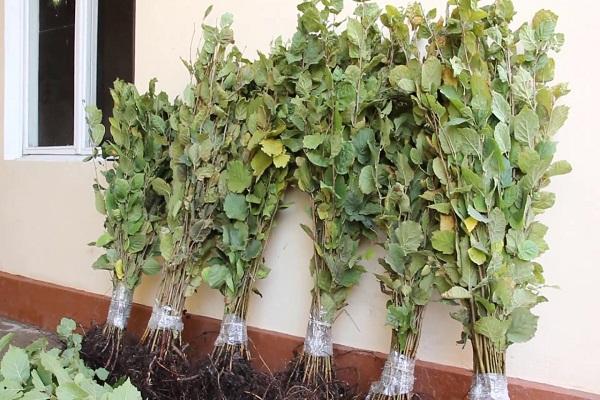
Incorrect fit
Violation of agricultural practices for planting trees in the ground, the wrong choice of planting site are negative factors that can lead to infections and infertility of hazelnuts.
The area for walnut crops should be sunny, hazel can grow on slopes and prefers higher ground. Wells are prepared and marked in advance according to the planting schemes of a certain variety and the size of the future walnut plantation. Depending on the height of adult bushes, the interval between plants is chosen: from 4 m by 4 m, to 6 m by 6 m.
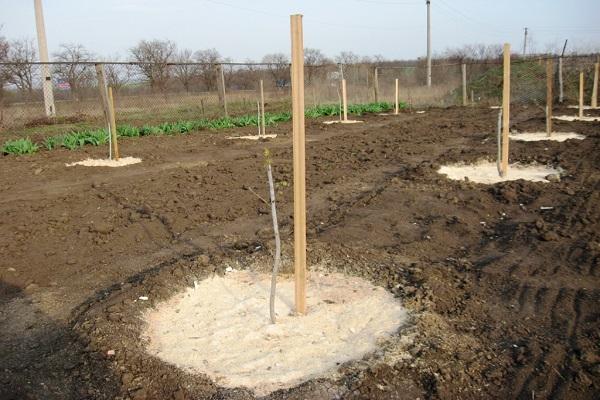
On a note! For a quick return of the harvest for industrial purposes, gardeners resort to tricks: the plantings are deliberately thickened, after 6 years they collect a full crop, then the plantings grow, excess trees are removed, leaving room for permanent specimens.
Planting holes for hazelnuts should be deep enough - 30-40 cm. A nutrient mixture of organic and mineral fertilizers, diluted with the main soil, is poured onto the bottom. It is more convenient to plant trees together, it is easier to maintain the central position of the seedling in the hole: one person fixes the plant in the center and spreads the roots, the other bury it, carefully tamping each layer.
The underbarrel circle is mulched with mown grass, sawdust or a mixture of peat and sand. Young trees are watered at the root at the rate of 20 liters of water per plant.
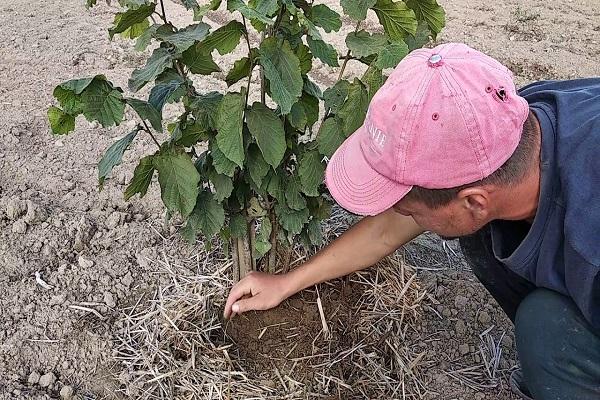
Improper care
Wild hazelnuts grow independently in the forest; domesticated hazelnuts require care from gardeners. If agricultural technology is not followed, the tree stops bearing fruit.
The complex of measures for the care of walnut plantings includes:
- Watering - hazelnuts do not tolerate drought well, it is important to water the plants in early summer, when flowers, buds, and generative organs of the tree are laid.
- Regular fertilization increases the yield, the nut is responsive to organic matter, it is necessary to introduce nitrogenous fertilizers and a potassium-phosphorus complex.
- Pruning - an excessively lush crown will harm the tree, young shoots should receive enough light, so more fruits will ripen. It is necessary to prune the crown from the age of six, and the procedure should be repeated every two years.
- Mulching under-barrel circles is a must-have technique that allows you to retain moisture in the soil. As mulch, sawdust, straw, mown grass, a mixture of humus and sand are used.
Regular care of the walnut plantation allows you to restore the yield of hazelnuts in a year.

Freezing
A harsh cold winter with little snow is one of the reasons for the absence of fruits in hazelnuts for the next year. You can protect walnut plantations with the help of special shelters, bending branches to the ground. But this technique can only be used with small trees, as soon as the plant gains growth, it will not work to bend it.
In this case, it is necessary to protect the root system by sprinkling the root circle with mulch, and wrap the tree trunk with agrofibre or close it with spruce branches.
Unfavorable weather conditions
Hazelnut yield may vary from year to year. Excessively hot and dry summers or monthly precipitation in a short period of time reduce the hazelnut harvest to zero. It is difficult to deal with the vagaries of the weather. It is necessary to support the plant's immunity, balance feeding and adjust the irrigation system depending on weather conditions.
Even if the season for hazelnuts was unsuccessful due to a too rainy or hot summer, next year the “rested” tree will delight with its fruits.
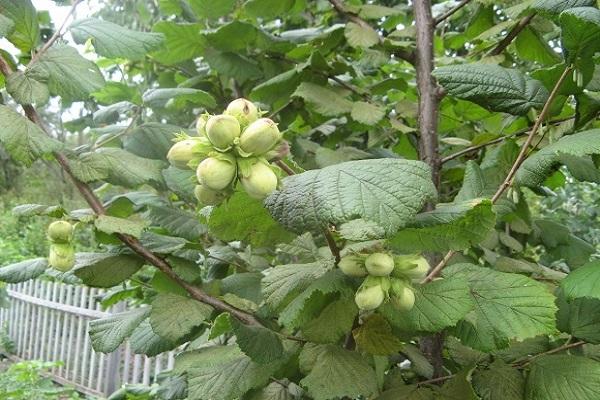
Diseases
A common reason for the infertility of the walnut tree is infection with fungal or infectious diseases.
Trees should be inspected regularly and action taken if signs of infection are detected. Hazelnuts are especially vulnerable in early spring and during flowering.
Powdery mildew can greatly weaken the plant's immunity, the fruits will not tie, there will be no harvest.
Preventive measures against infections:
- Whitening of trunks with lime mortar in early spring and autumn after harvest;
- Timely harvest, removal of affected nuts.
- Cleaning and further burning of fallen leaves.
- Spraying trees with Bordeaux liquid in early spring during the budding period, during the flowering period, the treatment is repeated.
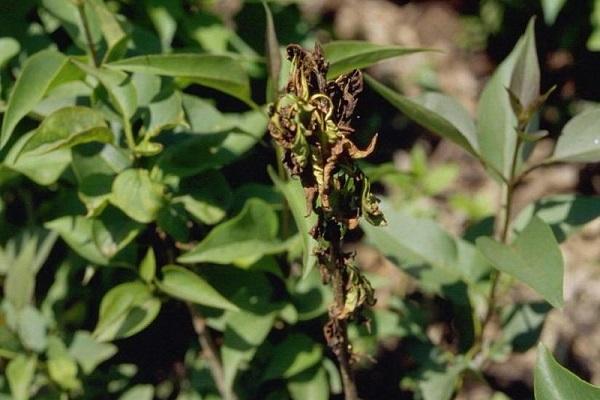
In case of severe infection, trees are treated with fungicides "Quadris", "Flint". Detection of the disease at the initial stage allows you to fully preserve the crop.
Pests
The walnut fruit is capable of destroying the fruits of the entire walnut plantation. Nuts infect the larvae of this beetle. The fruits become wormy, unfit for food and storage, and fall prematurely.
In case of severe infection, insecticides are used: "Aktara", "Calypso". Processing is carried out twice: in early spring and in the middle of summer.

Ways to solve the problem
When the cause of the infertility of the nut or the decrease in its yield is found, they proceed to eliminate it. The set of activities includes:
- Regular treatment of trees from pests and diseases: the use of fungicides and insecticides.
- Removal of fallen leaves and worm nuts.
- Attracting pollinators to walnut plantations, artificial pollination of trees.
- The correct choice of planting site and adherence to the planting scheme.

Preventive measures
Prevention avoids the problem. By taking care of the plant regularly, the grower minimizes the risk of crop loss. Basic preventive measures:
- To avoid freezing, bend the nut to the ground and cover it with agrofibre or spruce branches for the winter.
- Cover the roots of trees with mulch.
- Improve plant immunity through complex fertilizing.
- Timely watering, adjusted for weather and climatic conditions.
- Whitening of trunks.
- Regular inspection of walnut plantations.
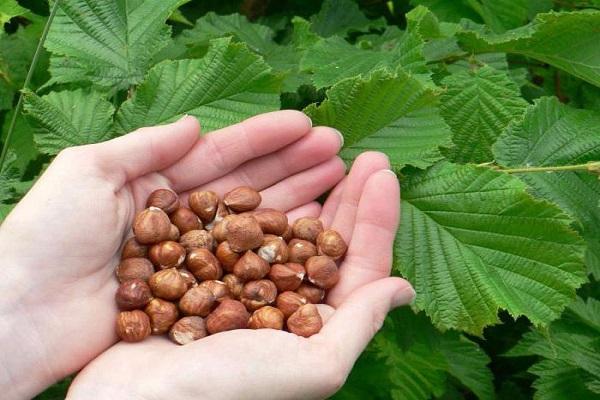
It's easier to avoid problems than to solve them later. Planting hazelnuts should be planned, the site selection is carried out carefully. Transplanting trees is a laborious task that lengthens the adaptation time of young seedlings.
If the hazelnut variety is zoned and selected correctly for growing purposes, then, subject to agricultural techniques and regular care, the trees will delight gardeners with the first harvest in the sixth year of growth.
